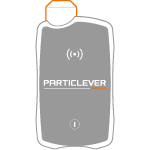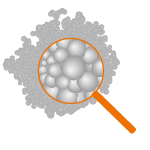Metal residue


Many processes emit metal particles into the air in the form of residue, which means that a large number of industries are affected.
That dangers that these particles represent may result from chemical compositions, such as those which use metals known to be hazardous (cobalt, arsenic, silver, cadmium, mercury, lead, nickel, etc.).
Separately or in combination with chemical composition, the morphological nature (nanoparticles, fibers, state of aggregation and agglomeration) influences the perceived level of danger.
PARTICLEVER technology is unique at measuring both the quantity of material and the particular morphological properties needed for the risk analysis.
PARTICLEVER can detect and quantify the mass of all metals in the periodic table between aluminum and uranium, and observe the corresponding particles under an electron microscope.
As particles size of metal residues are little-known, it is recommended to apply an evaluating strategy in steps. See in our Nanoparticules dossier “Evaluating exposure in steps”.



